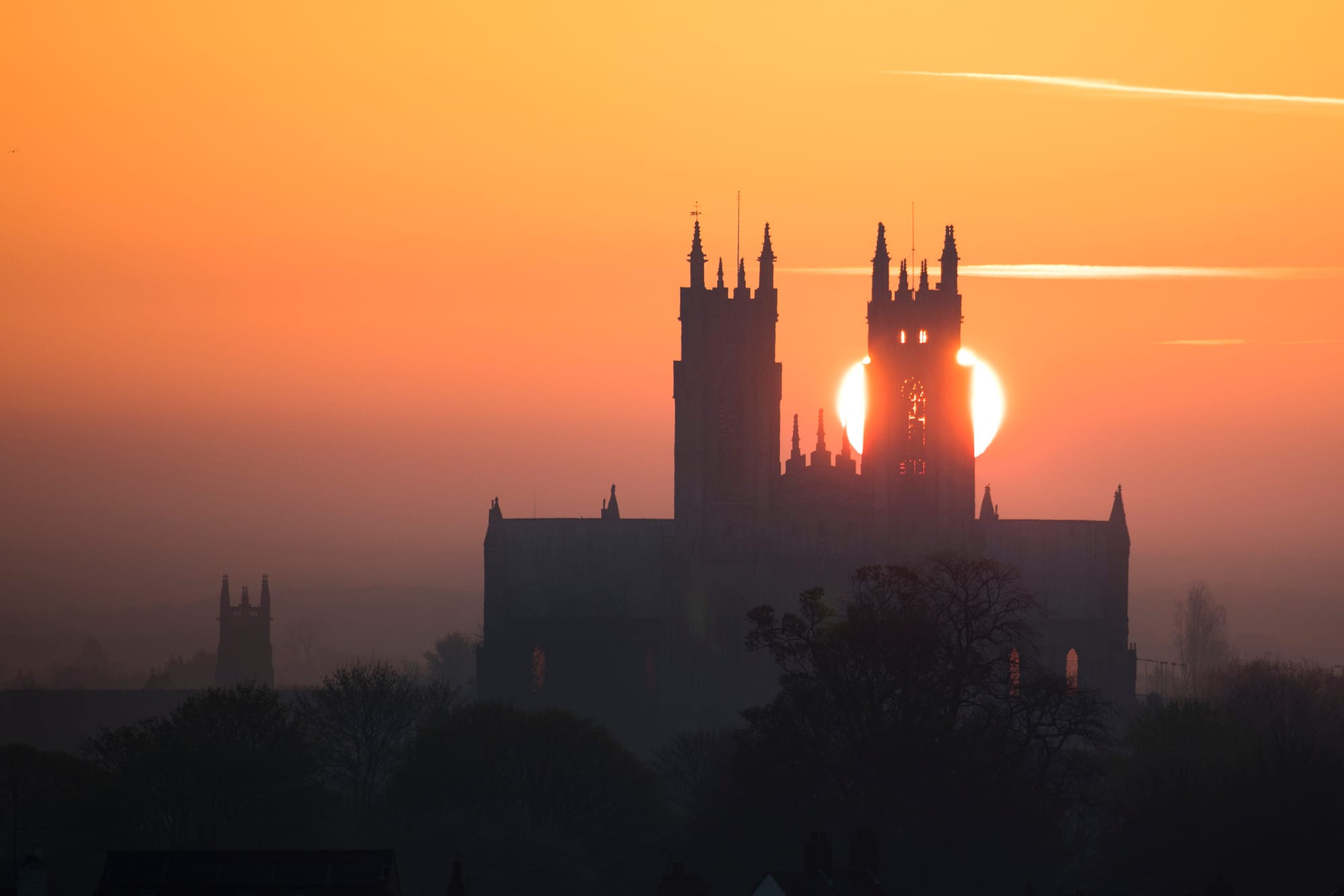
This article is a part of the Eustace collection - aimed at helping others create counter-narratives to threats to our historic environment.
Learn more about EustaceAccess all the Eustace articles here:
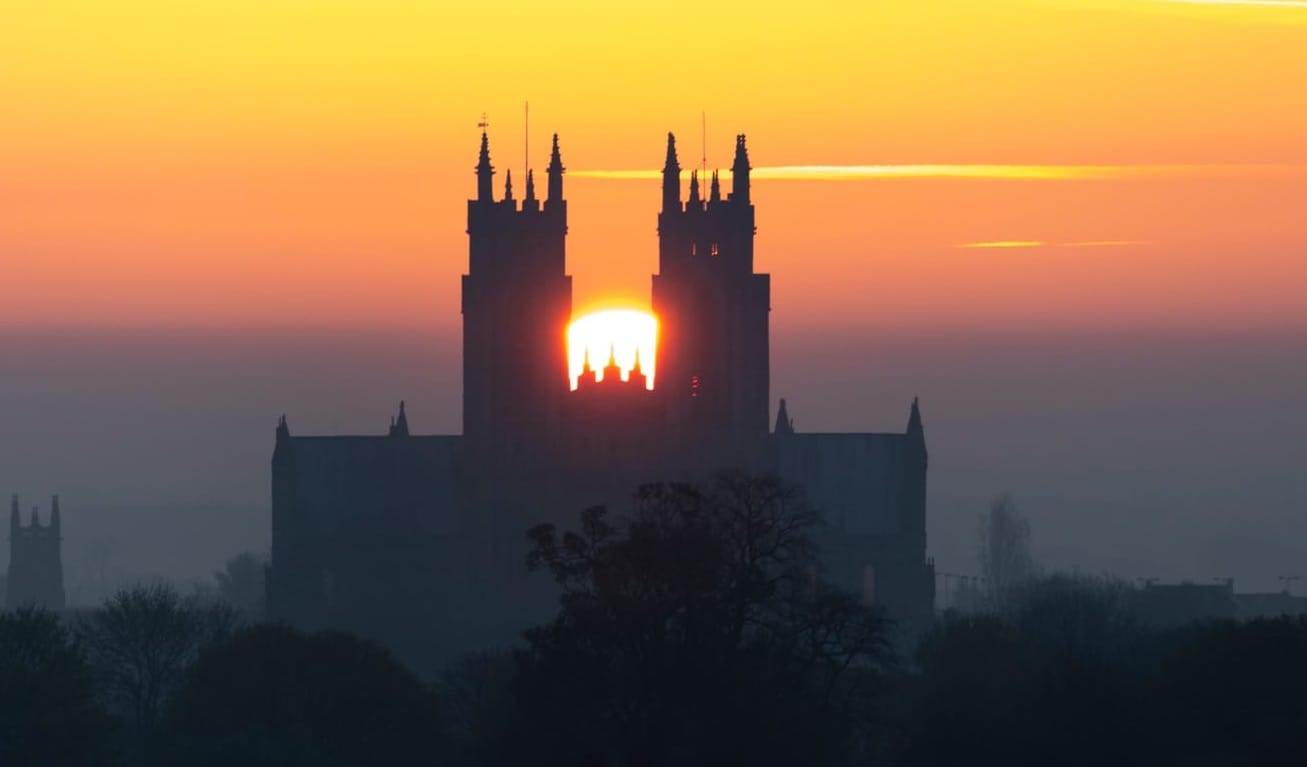
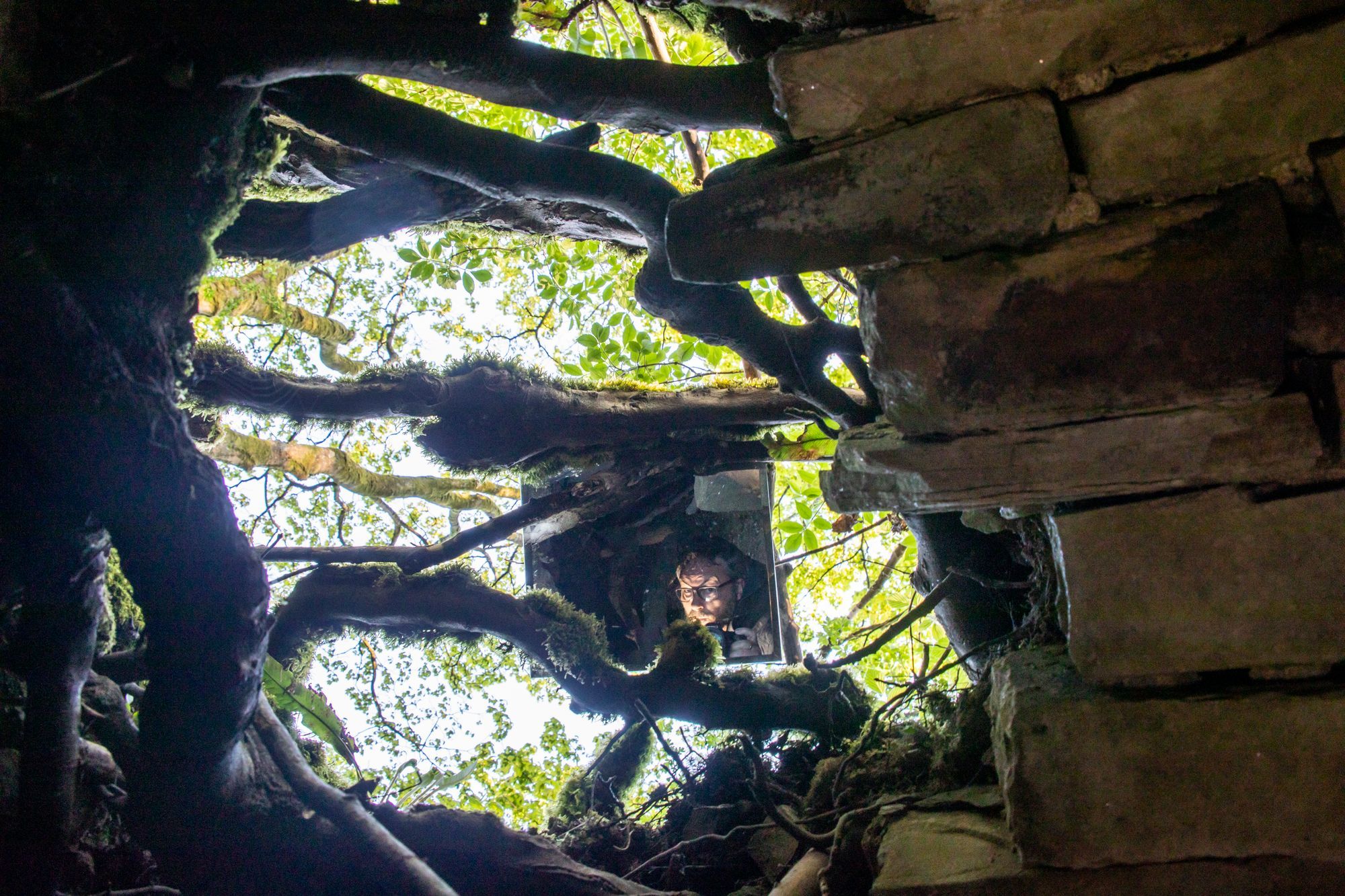
The wondrous things I cannot see.
I have to admit that I’ve been suffering with a bit of anxiety recently. It’s the type that’s difficult to shrug off. The early hours are the most troublesome, when the thoughts are rattling around inside my head. It stems from a feeling of worthlessness. I told a therapist, many years ago, that it felt like being cast between the open doors of the bomb-bay of an aircraft in flight.
When I’m at the lowest point, odd things start to happen. I harden up, my sinews become tight, my jaw aches. I also become forgetful, a bit erratic and routines go out of the window. And there’s another peculiar side effect: my senses are heightened. My taste and smell especially so.
I tell myself that it will pass, but whilst it’s here, I decide to turn my troubles into alms and take advantage of my super-senses.
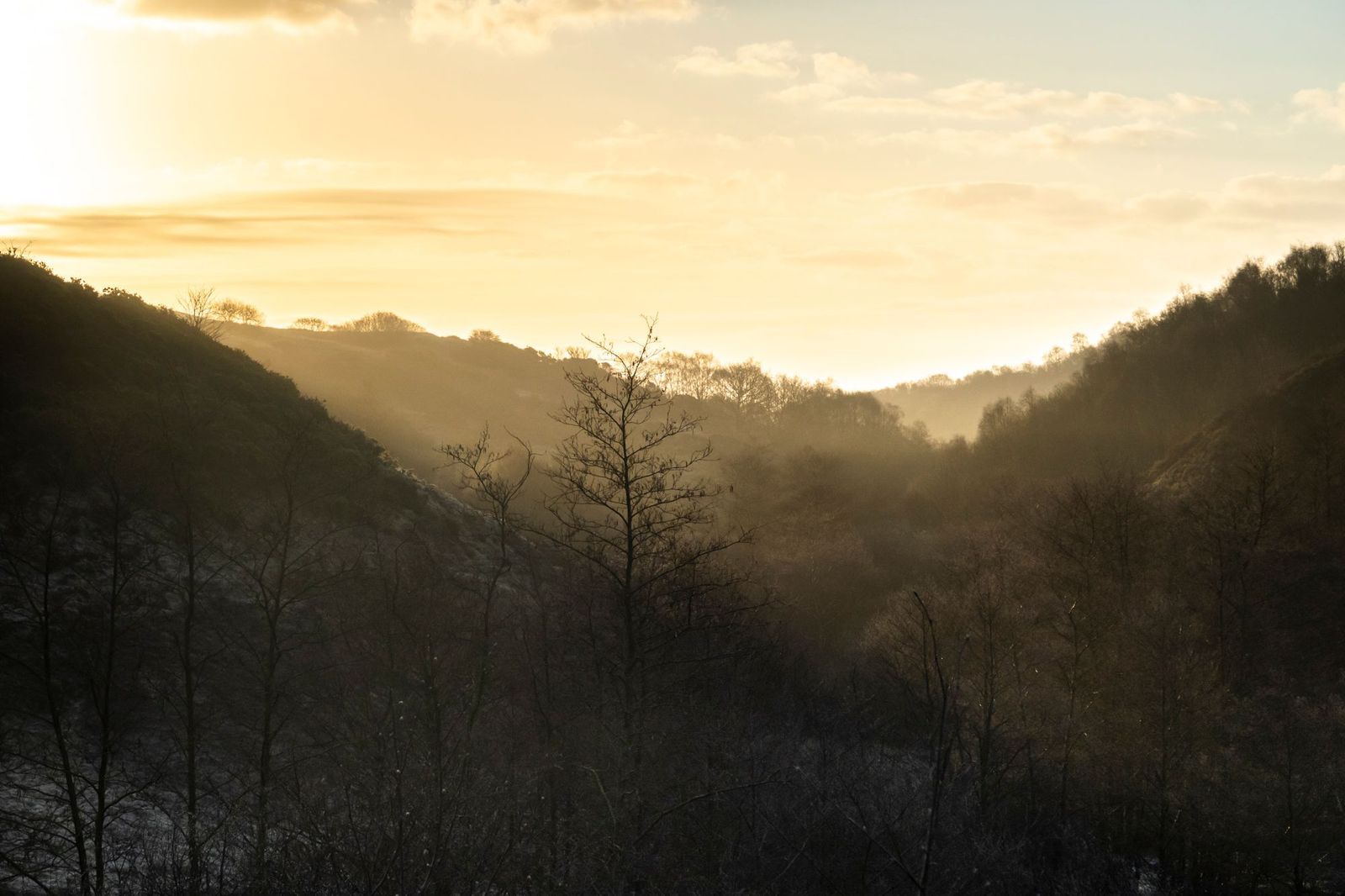
It’s the late afternoon of Sunday the 5th of November, and I walk into a location that is one of the least visited in these Isles. I’m in the thick of a wooded, gorge-like valley that was cut by glacial waters at the end of the last ice-age. Cheesden Valley lies between Rochdale and Bury in Greater Manchester, in the shadow of moors that nod towards Pendle.
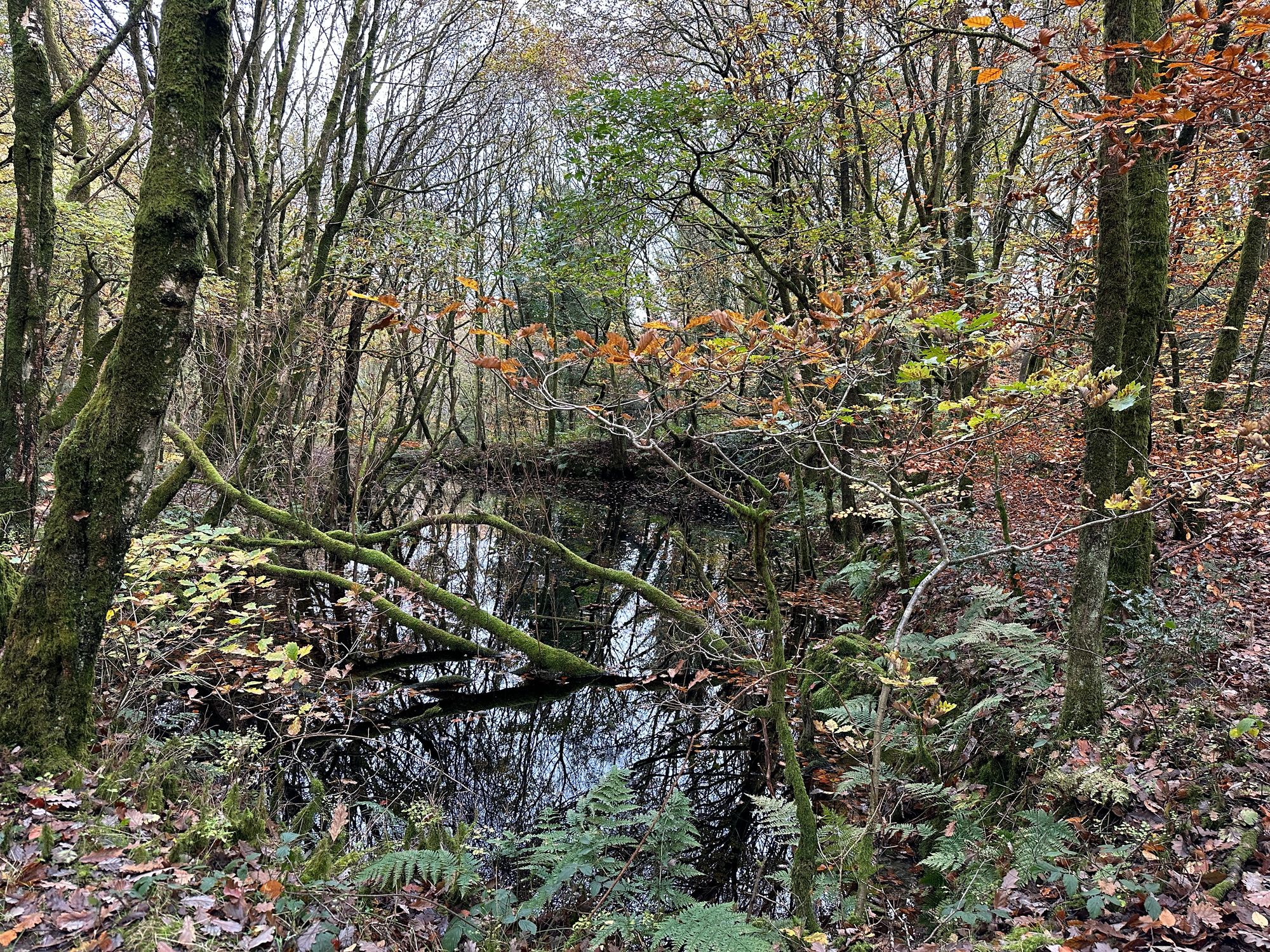
The valley is cauterised by roads to the north and south, in parenthesis to encroaching modernity. However, there is no car park or visitor centre, no highway or lane that runs through this place. It is completely and deliciously isolated
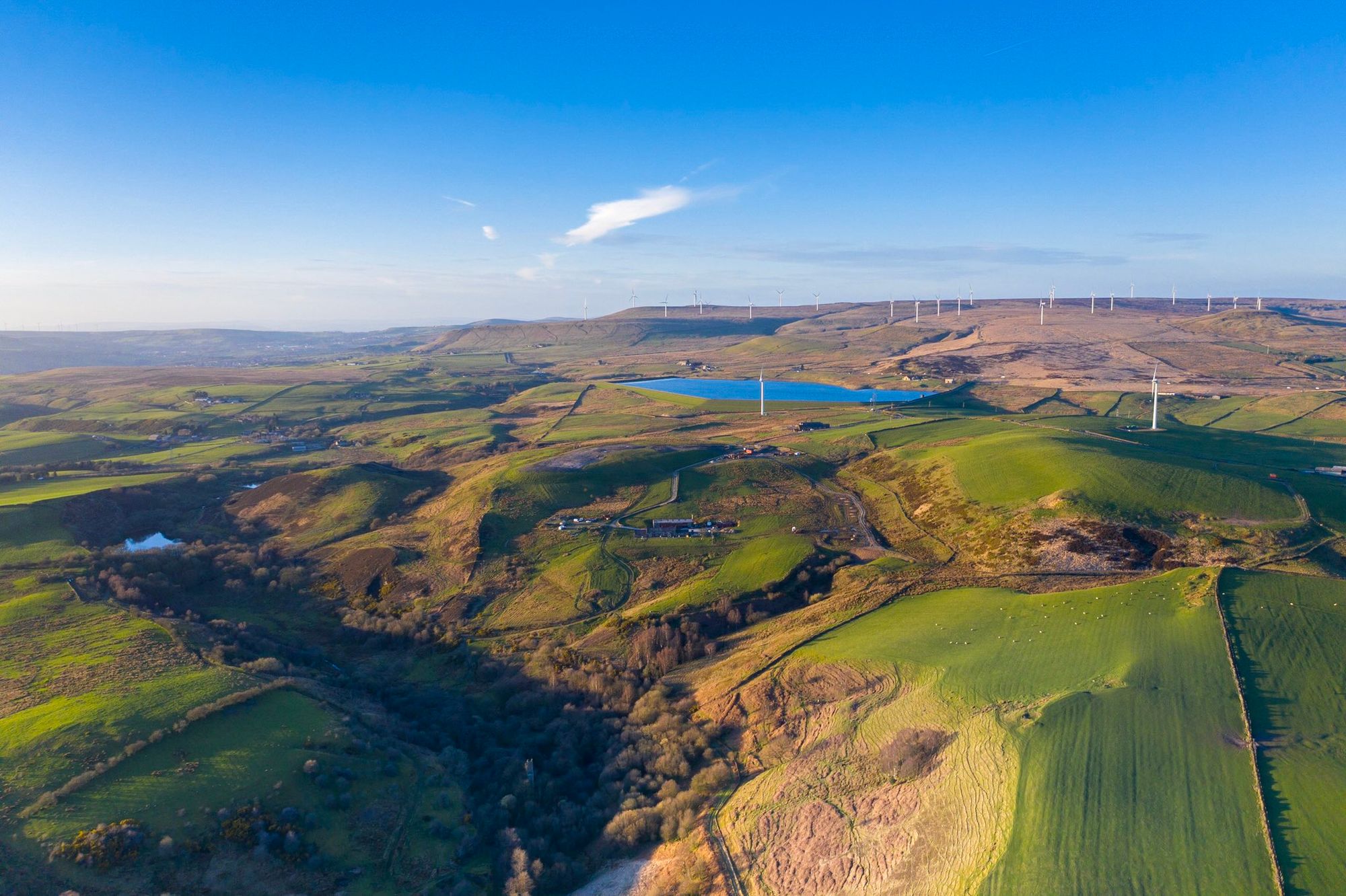
The entrance to the woods is often flooded, and there are several hurdles to overcome before venturing into the realm of Clegg and Jowkin. It’s at this point that some turn back and take an easier route along the top of the cut. The gods of this valley only reward the resilient: those that can escape a flooded path, clamber over exposed roots, duck the barbed Hawthorn and ignore a curious compulsion to avoid entry at all costs.
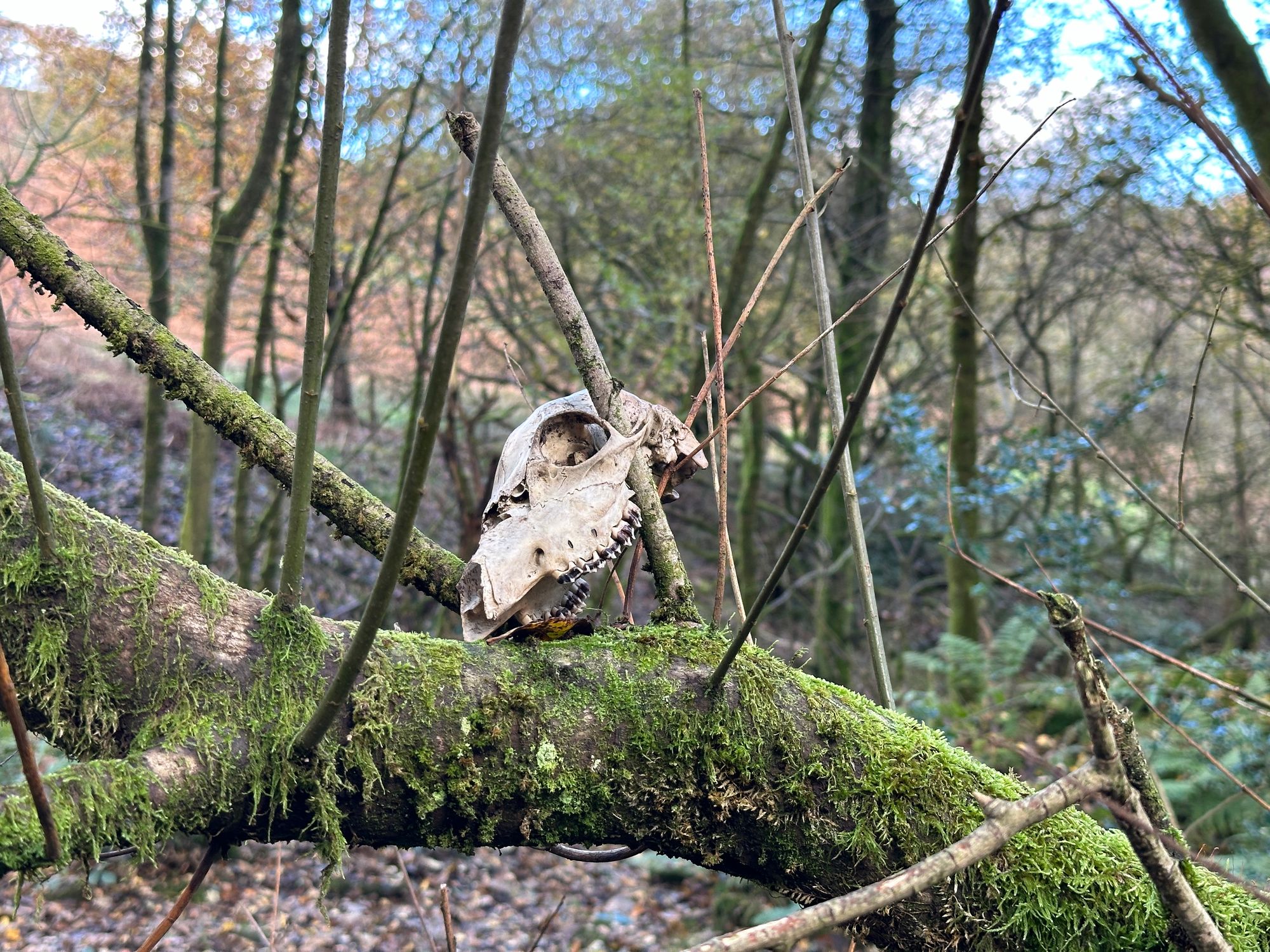

Jowkin Wood is classed as one of England’s ancient woodlands. It has had a continuous presence for around 10,000 years. The primeval nature of this place is both sublime and jarring. No council funded gravel paths or stiles here - just desire paths that reveal a journey of necessity in their splayed diversity. Many of the paths aren’t of human origin.
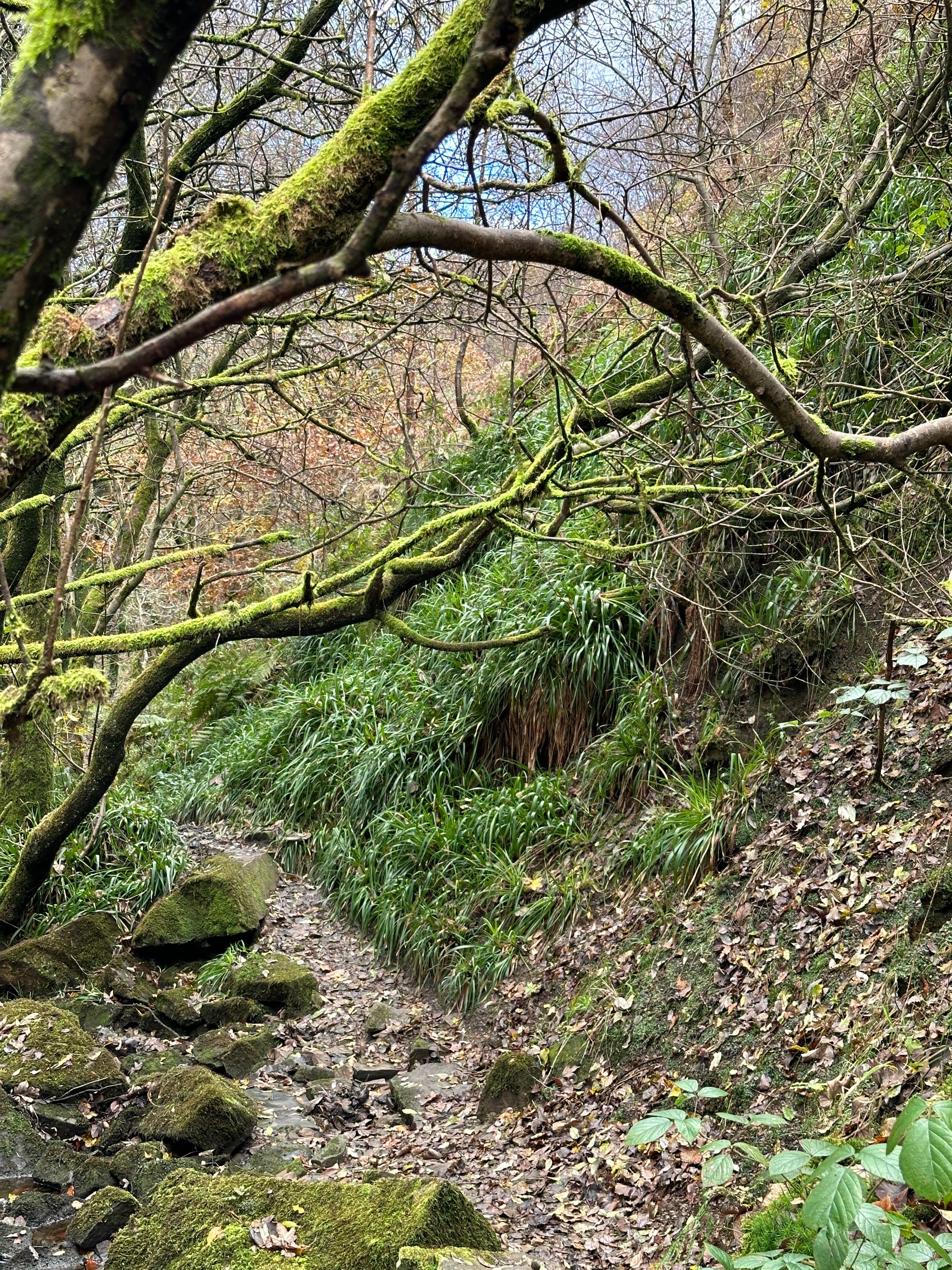
I walk into the heart of Jowkin and deviate out of the mire into a tangled mass of deciduous trees.
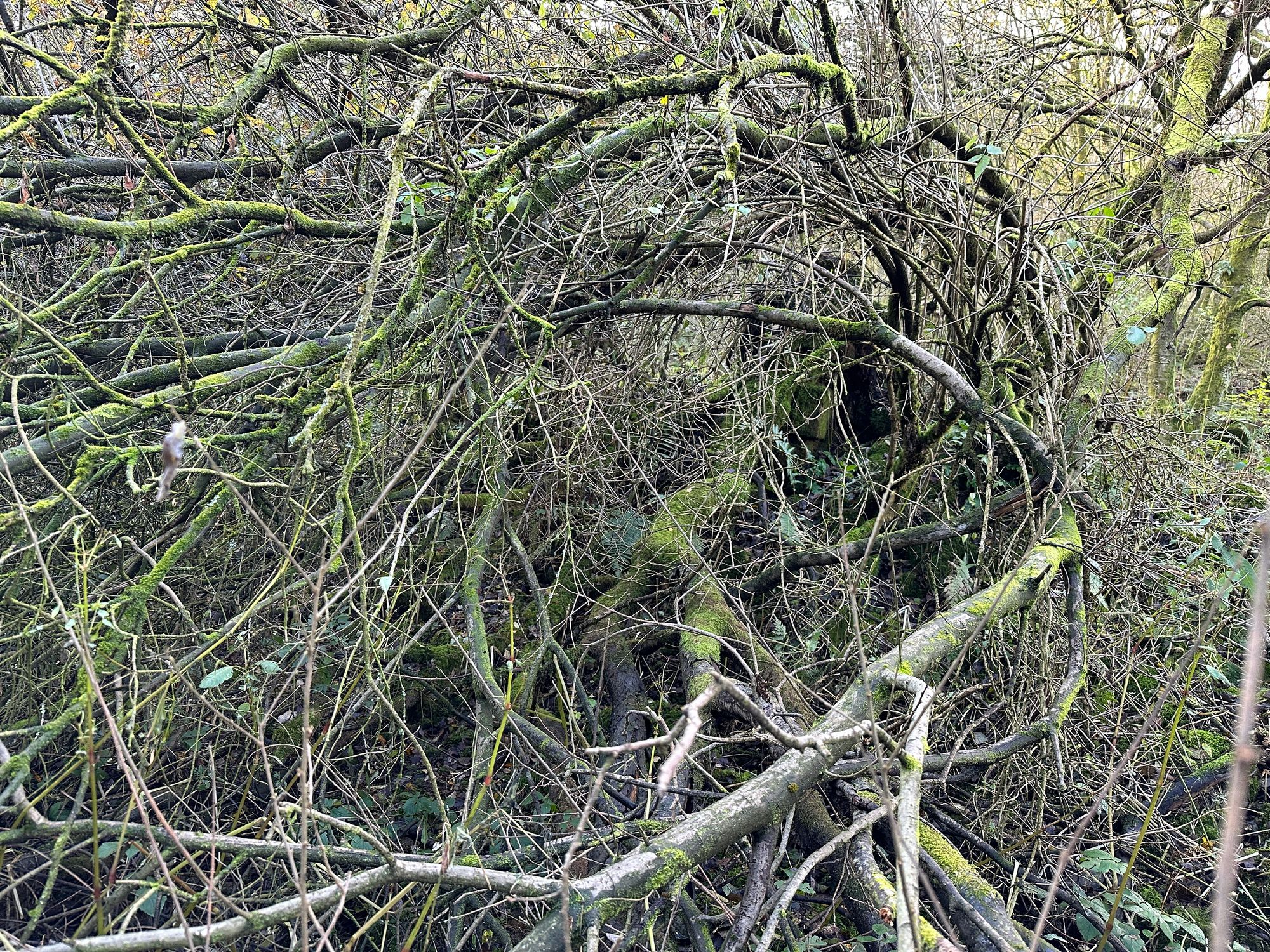
My anxiety starts to dissipate with every step I take. This is a biosphere that I’m completely unfamiliar with. If a voice told me that I had been transported by aliens into an alien world, it wouldn’t be too difficult to believe.
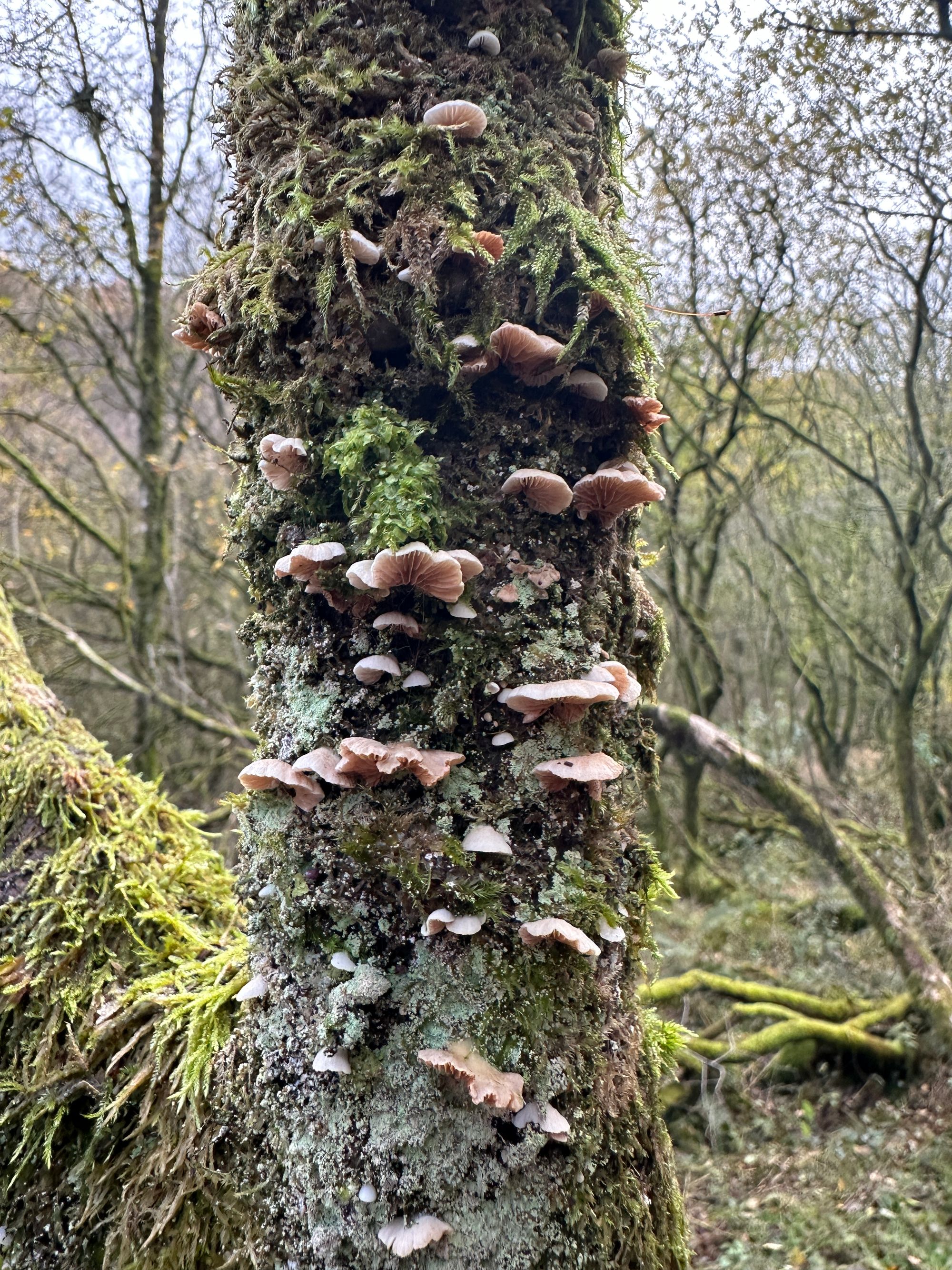
There are forms and shapes here that I’ve not seen before: living entities with names that tie the tongue into knots: Marchantia polymorpha, Mycena, Asteraceae and Bromeliaceae.
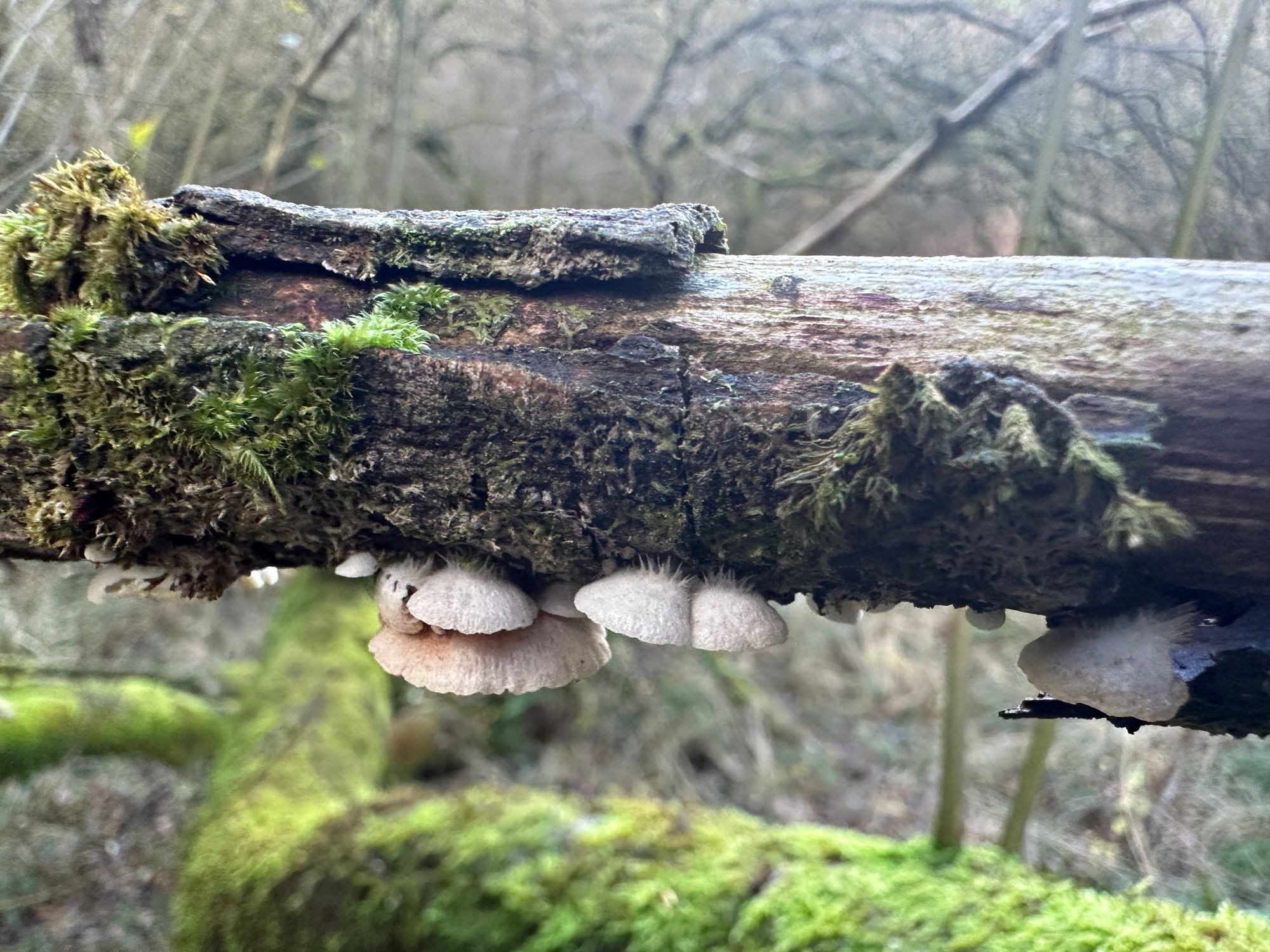
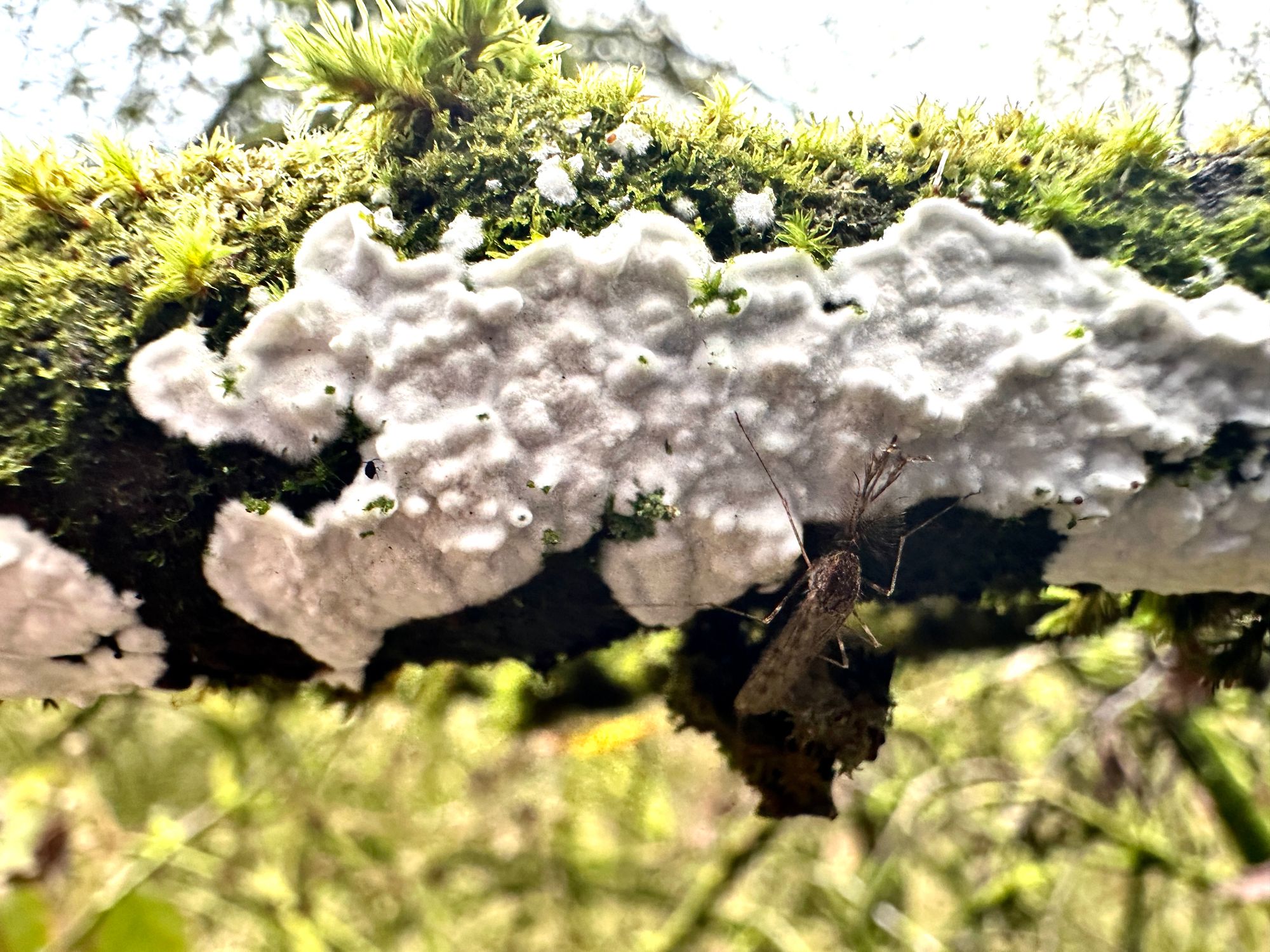
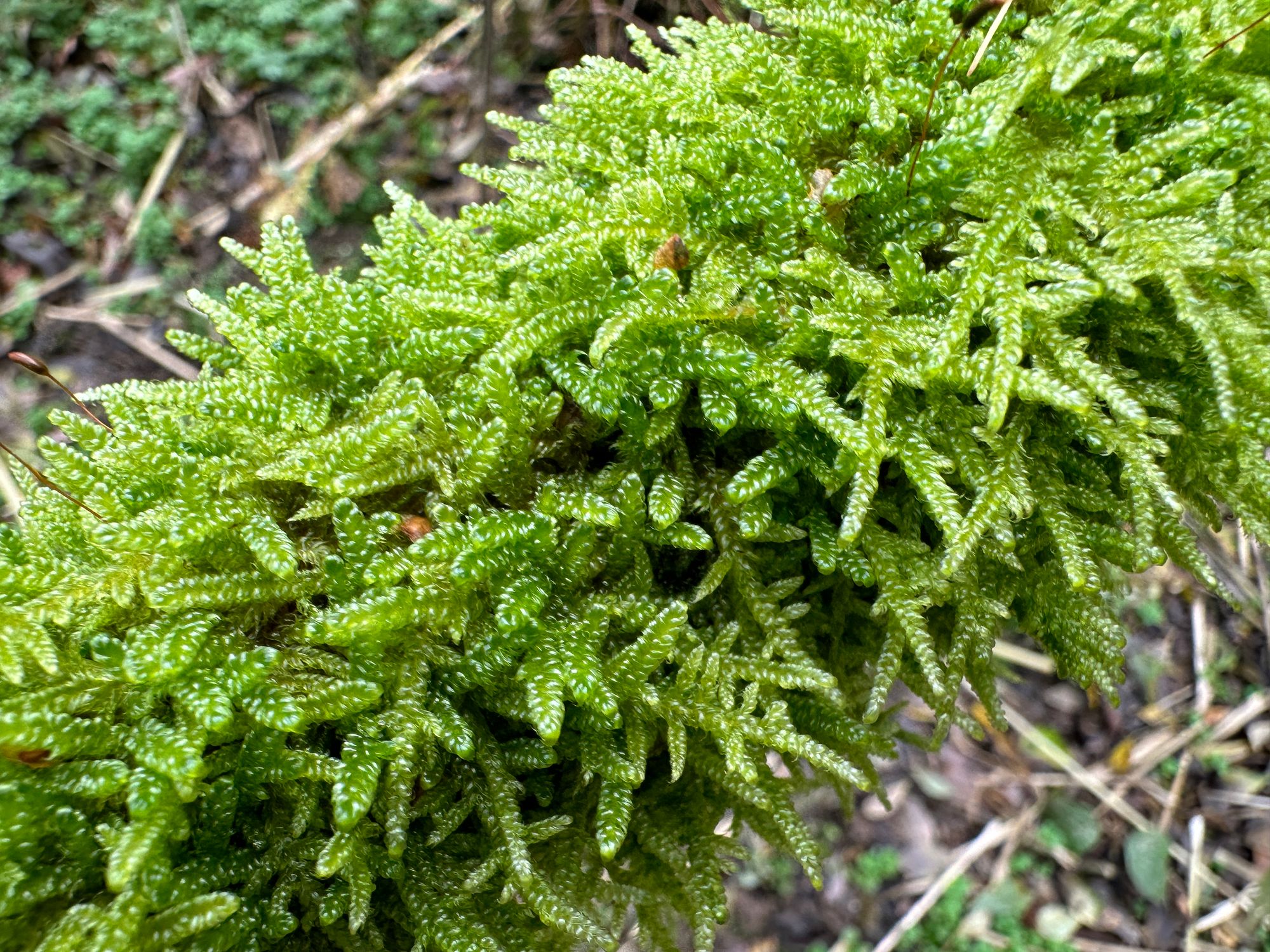
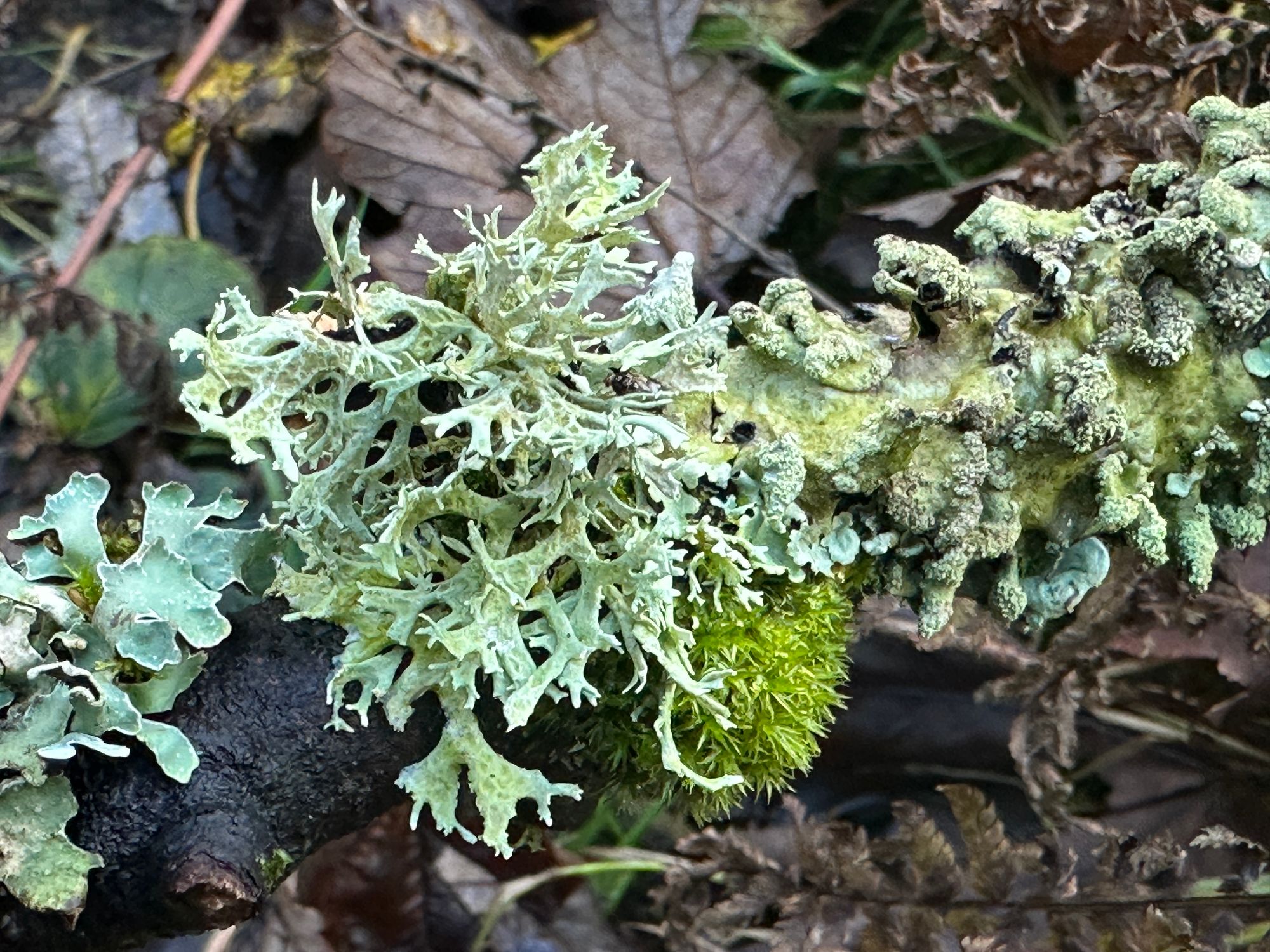
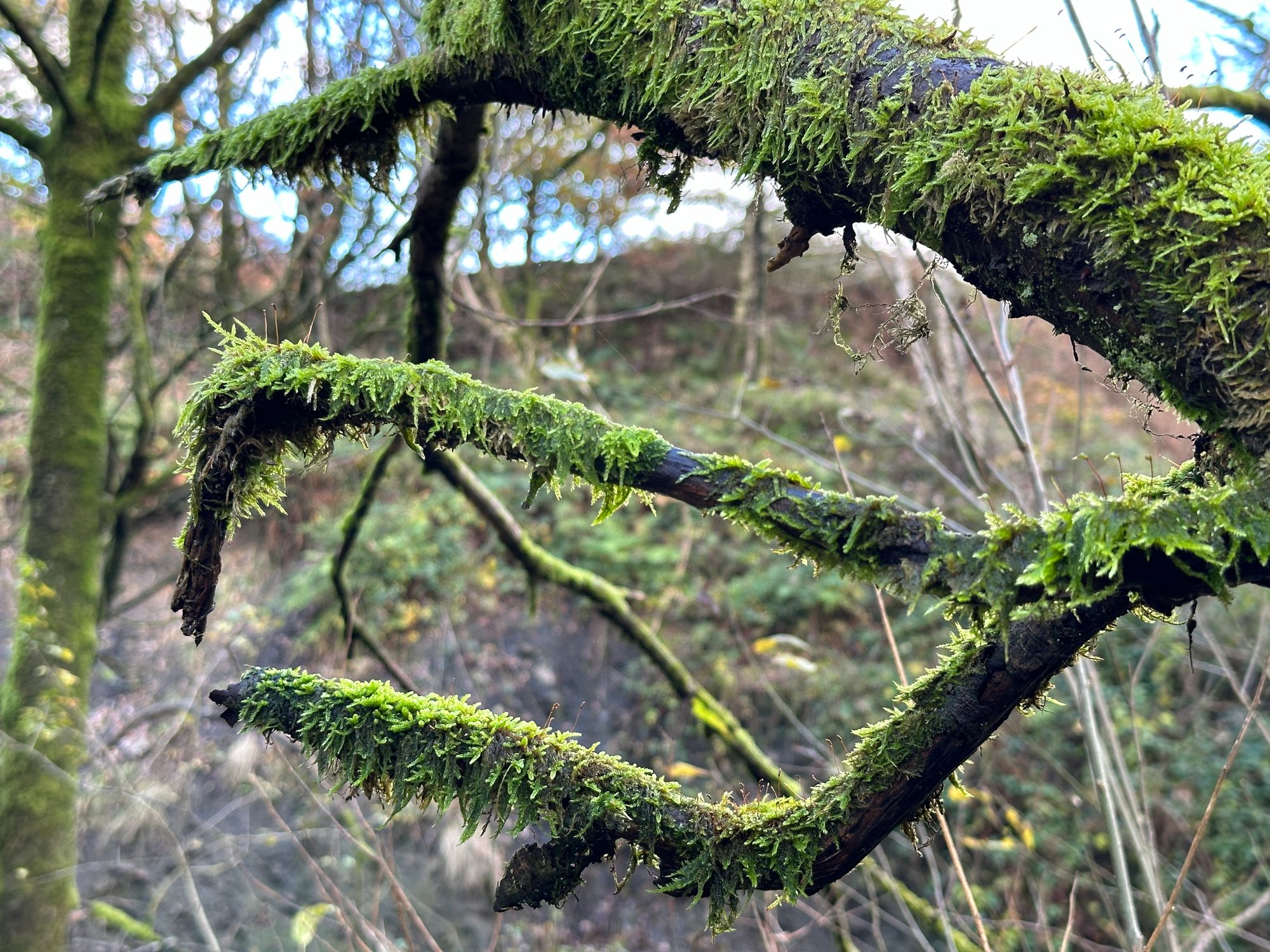
To think that this place has such an invisible and alternate life, just a few miles away from the litter-cluttered pavements of the urban sprawl to the south.
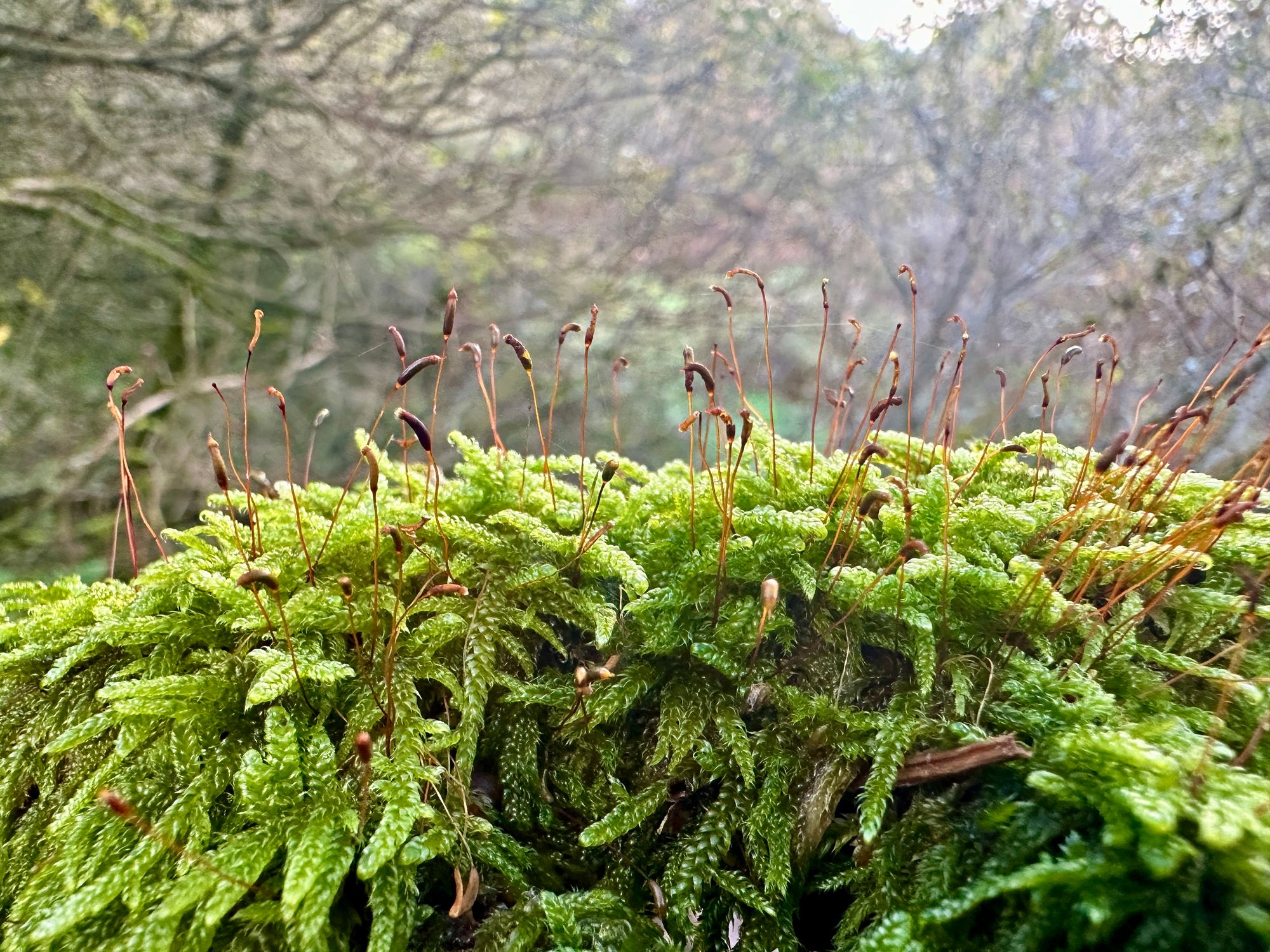
Some people have paid hundreds of thousands of dollars to rise up in a tiny capsule to the earth’s perimeter and see the stars through an oval window. There's no comparison to the transcendental nature of the sylvan, alternate reality that is Cheesden.
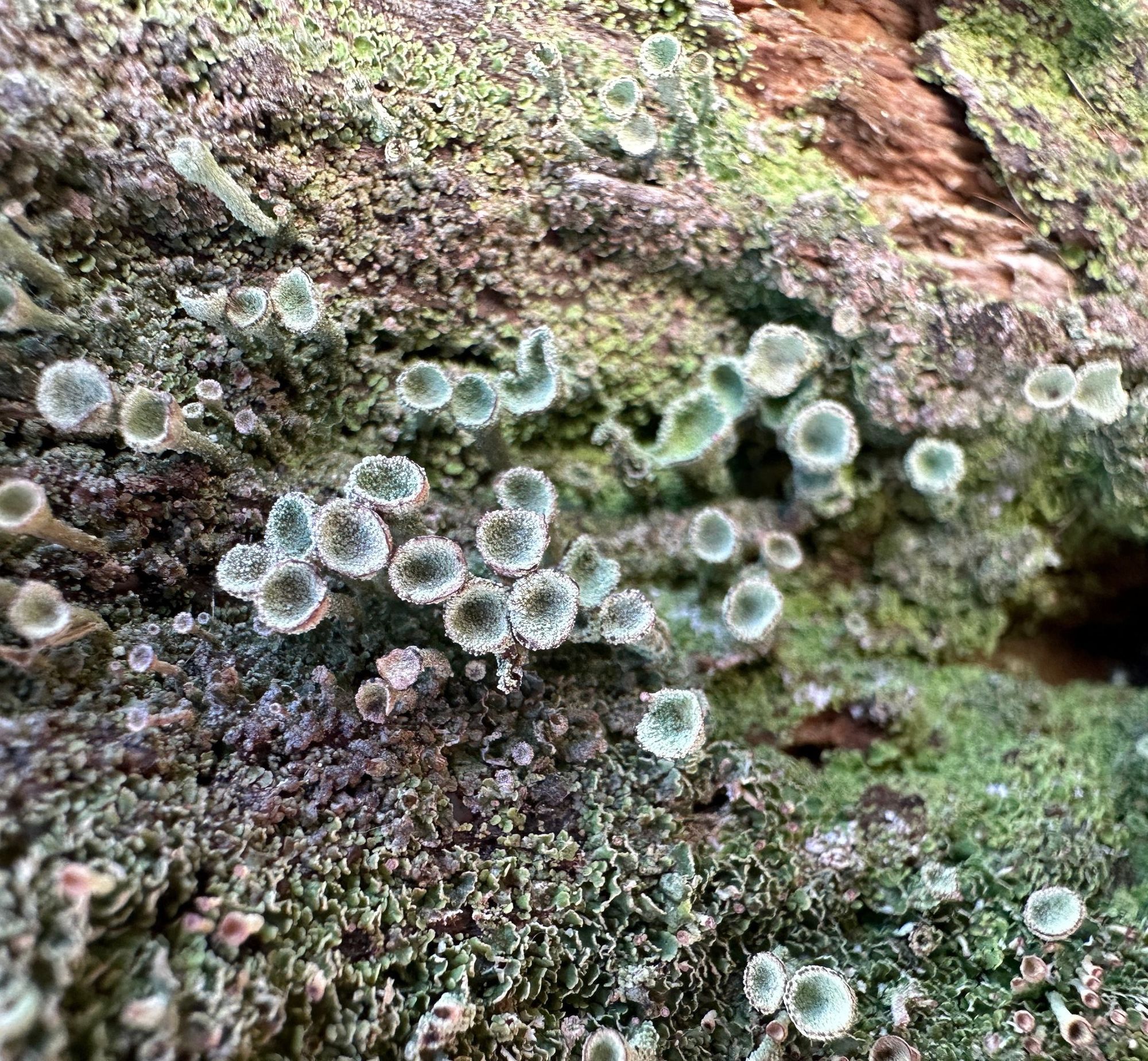
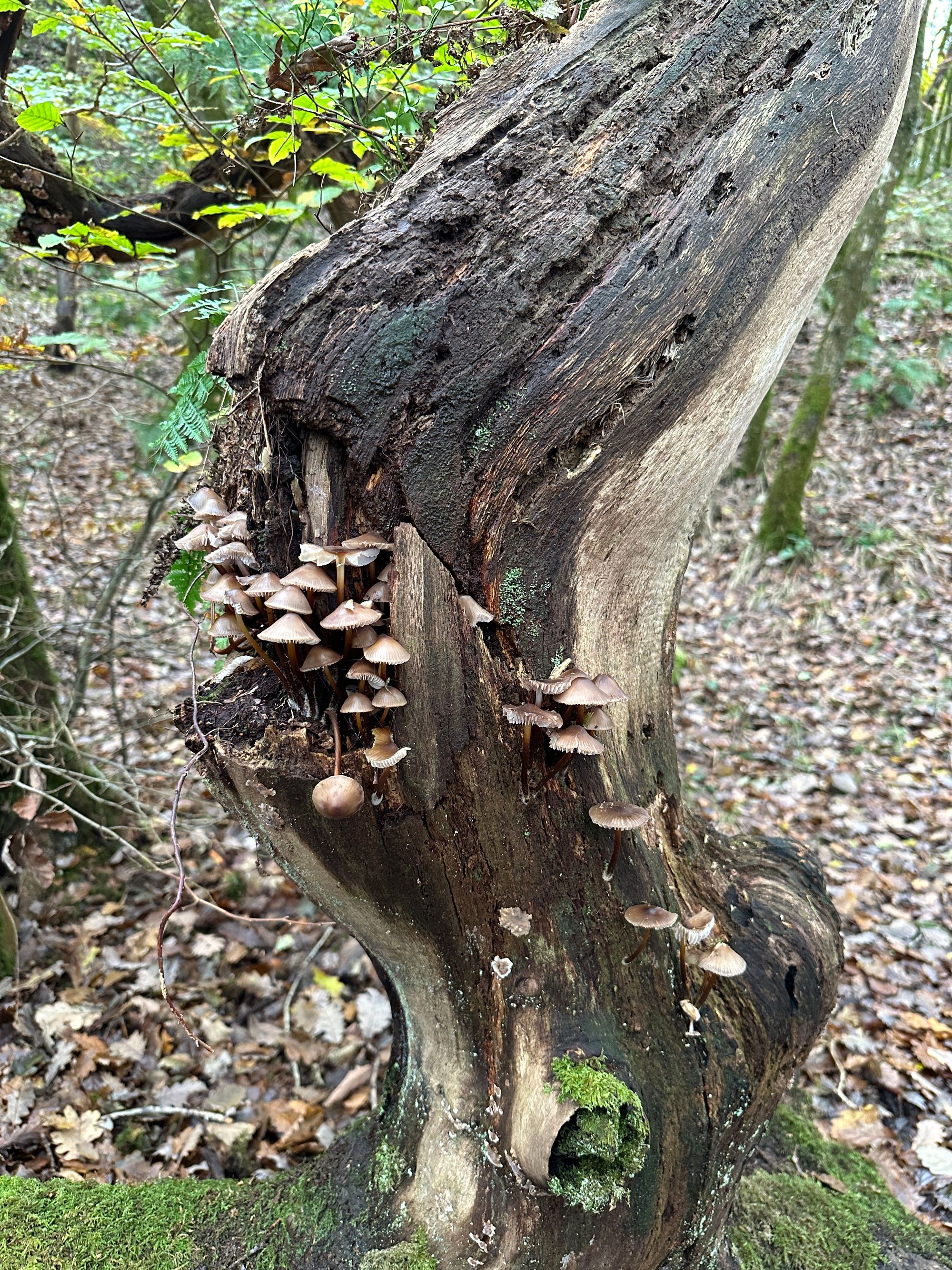
In the midst of this cushioned, clogged and congested space, the tension is sapped from my bruised and battered mind into the roots beneath; into the mycorrhizal networks, where trees combine and convey their mutual strength to those that are most in need.
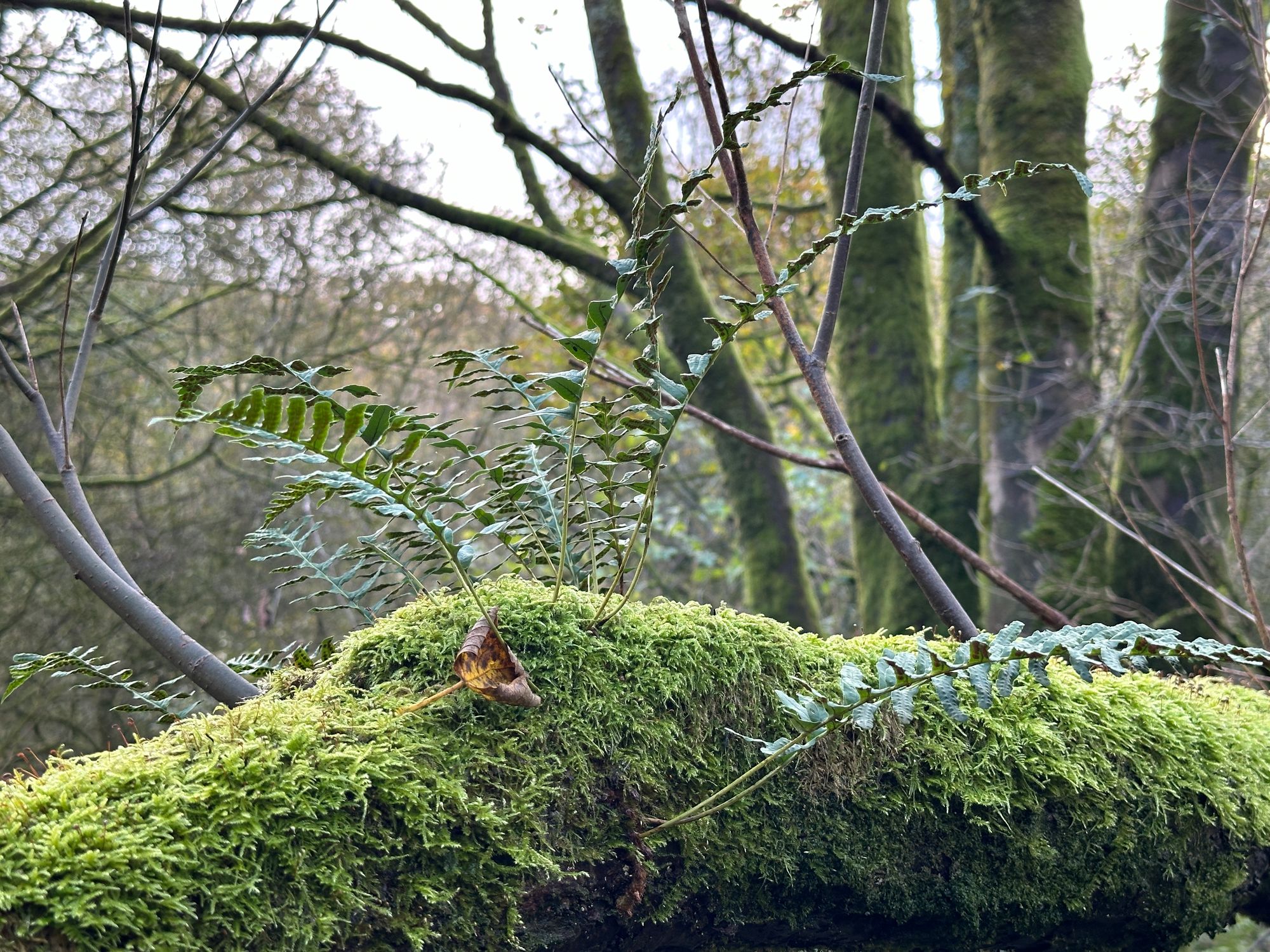
Cheesden reminds me of all the wondrous things I cannot see; and of Ruskin's words: "There is so much reason for singing in the sweet world when one thinks rightly of it."
This is a place that is free of spin. I am supplicant to a truth and honesty that is remarkably enriching. I feel as though I have new eyes.
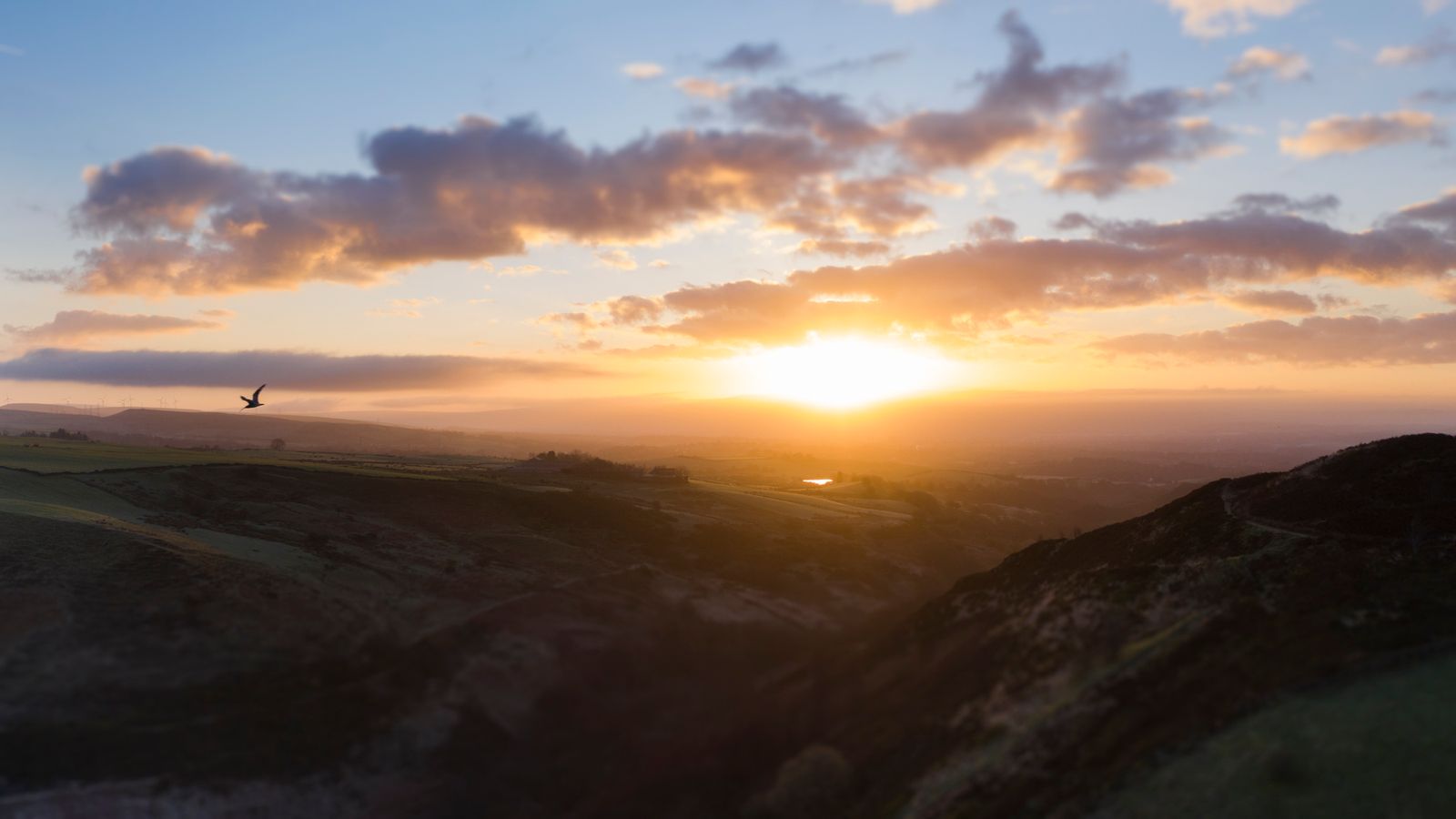
Photographs and words by Andy Marshall (unless otherwise stated). Most photographs are taken with Iphone 14 Pro and DJI Mini 3 Pro.



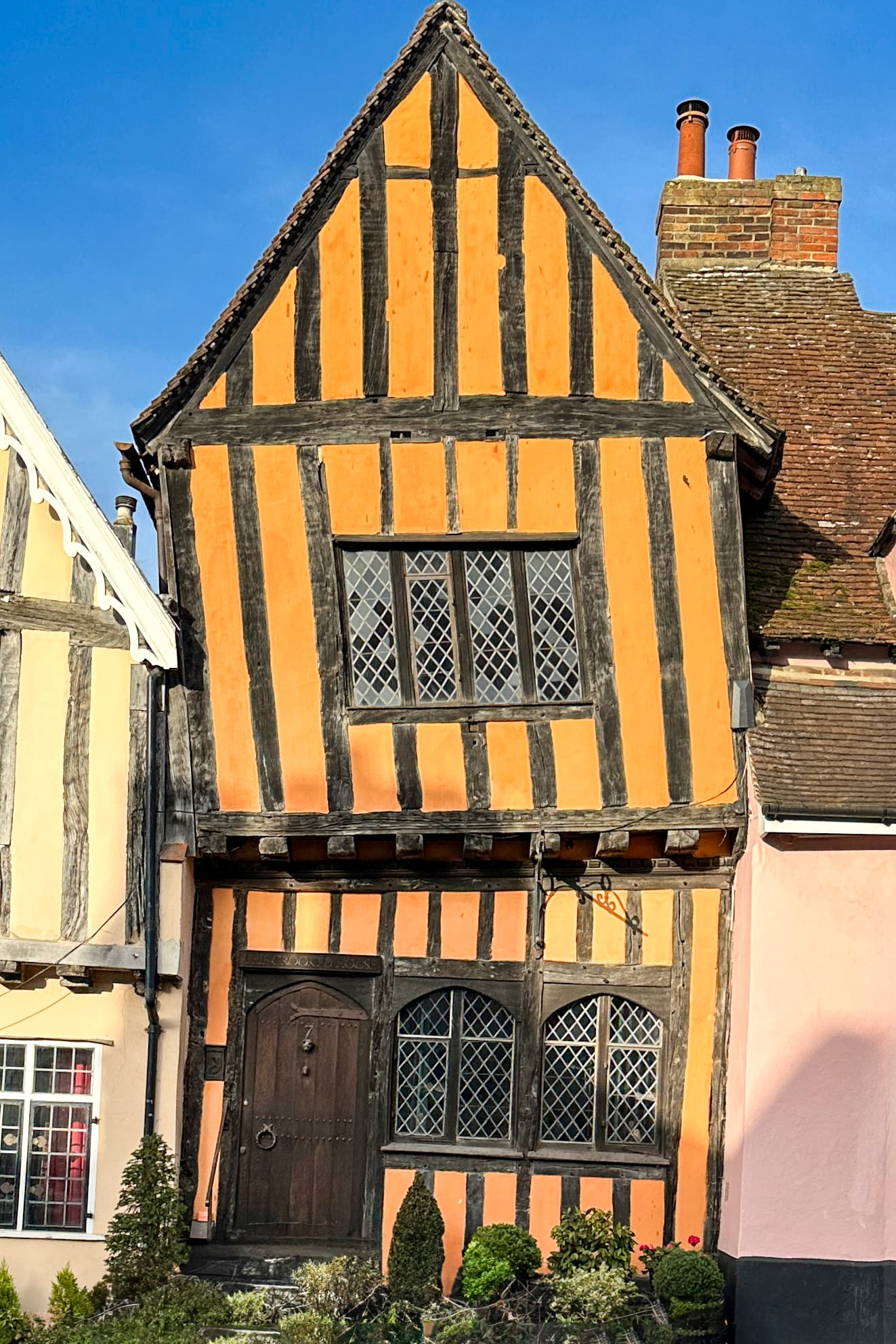

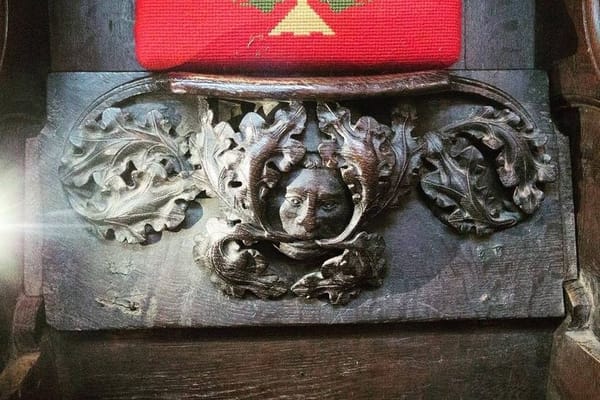
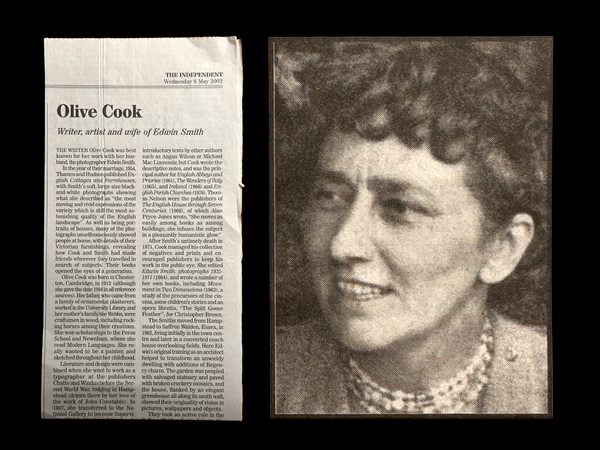


Member discussion